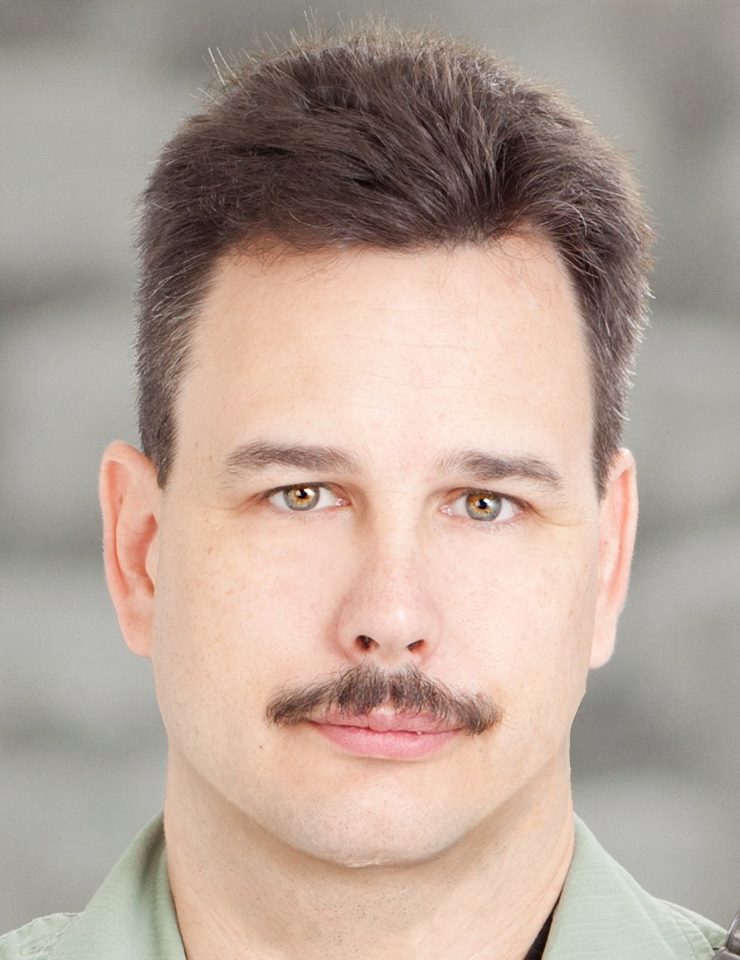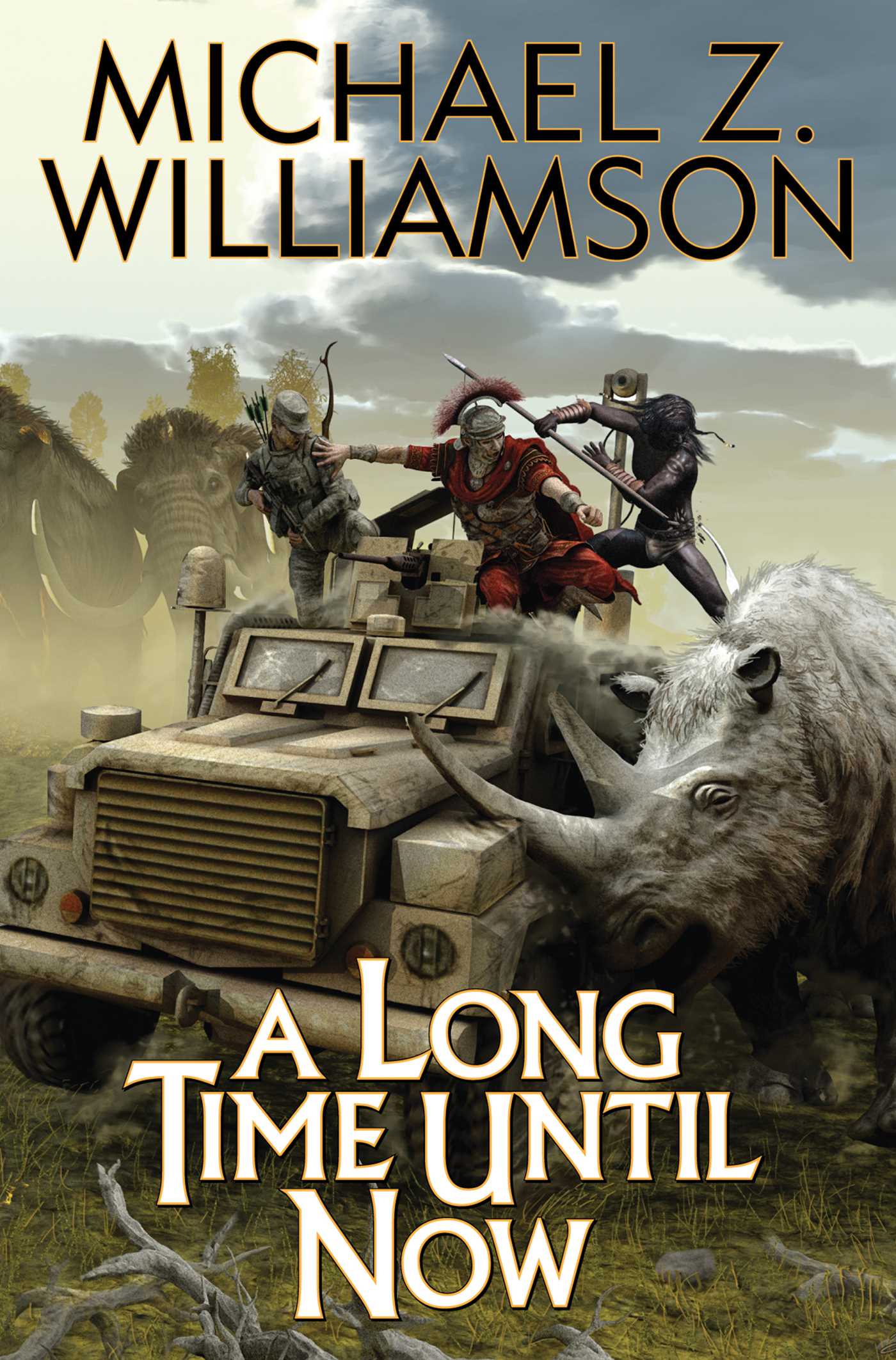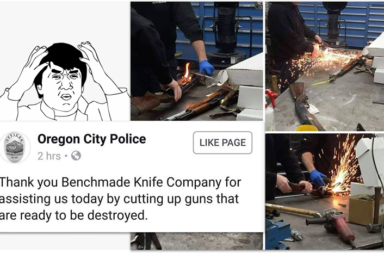I’ve been reading Michael Z. Williamson’s sci fi for about ten years. I first encountered his book Freehold when I was living off grid on a sailboat in San Diego harbor. The thrilling story of interplanetary war, and personal heroism set against a complex geopolitical framework triggered my imagination, and I’ve tried to read everything he’s written to the present day.
Michael Williamson’s biography offers more details of his many accomplishments, which include work as a skilled bladesmith, military experience, and working as a media consultant on firearms and survival topics. Williamson has also been active in the USO for many years.

Author Michael Z. Williamson
However, Freehold isn’t the book of his I enjoy the most. Rather, that honor goes to A Long Time Until Now, which is a fascinating and action packed tale of ten United States soldiers on patrol in Afghanistan who found themselves somehow thrust into the Paleolithic era, and are forced to survive in a primitive environment surrounded by other displaced peoples from the early hunter and gatherers era to more advanced societies.
Now, I love this kind of story, and love the real world survival lessons that get woven into them. Because Michael is a veteran, is trained in survival, and has mastered a number of different skill sets that apply to adapting to an emergency situation, I knew A Long Time Until Now would weave those elements among the plot to create a believable, and thought provoking survival story. He kindly agreed to a brief interview about the key survival lessons in this book, and I think we can all agree that they are as sound in the real world, as they are if you happen to find yourself stuck in the stone age.
Interview
Q: What inspired you to write A Long Time Until Now, and what did you want to do with it that is different from other books in the castaway or time travel genre?
MZW: Money. But seriously, I always like exploring survival situations, and getting an element that far away from the modern world was one way, and the location is one we have little research on.
Q: What was the best part about writing A Long Time Until Now?
MZW: Writing every character’s POV (point of view) and trying to keep them true to each. For example, there’s an atheist and a fundamentalist Christian, who have completely different views of the reason they’re where they are, and what is behind it. I chose a mixed bag of characters like you find in the current military and went from there.
Q: The military personnel in A Long Time Until Now have to face some harsh realities very fast that echo things people in the real world might face in a disaster situation. Finite amounts of supplies, limited sanitation, and no real immediate hope for things to get better. What should somebody preparing for an emergency or disaster situation take away from your book?
MZW: The more skills you have in a disaster, the better – first aid, navigation, procurement of food and water, communication. If your response to any question is, “I’ll let someone do that for me,” you’re reducing your odds of survival. It’s necessary to have support, but it may not cover all the gaps you have.
Q: Some preppers focus heavily on their weapons, and stockpile large amounts of guns and ammo. Now there is really no such thing as too much of either, but your survivors did rather well with a basic combat loadout for their rifles and sidearms. Do you think that same setup carries over well to the real world prepper?
MZW: Absolutely. A military unit engaging in combat operations has regular resupply of all materials, and can call for fire or air support. In a civilian emergency, you first have to keep in mind that non-defensive violence is still illegal, and any loud violence attracts attention. You should try hard to avoid starting fights, and remember that you can easily be outnumbered. Back in the 80s when it was the survivalist community, I observed that it’s anti-survival to start a firefight with government agents, or a large group of desperate people.
Q: Modern technology gave your survivors a foundation to stabilize themselves with, and adapt to the world around them, but would it be reasonable to say that in the long run, the knowledge and skill sets of the survivors was equally or even more important than their gear? A rifle is great until you run out of ammo, but knowing how to forge iron or raise goats seems to have a greater long term impact.
MZW: Yes. The primitive skills – everything from flint knapping to animal husbandry to weaving to iron reduction and smithing do require tools, but they’re much simpler tools and can be fabricated if you must. A good grounding in science makes things like ice houses and wells much easier to manufacture.
Q: Can you tell us about the planned sequel and what we might expect and when it will be out?
MZW: I hope to be done before the end of the year, though it’s getting tight. So about a year from now if all goes well. Or less than that if someone does build a time machine, in which case it came out a year ago. Check Amazon.
It covers another displaced element that lacked most of the critical skills the first one had, and fares far less well.
There will be a third one, around a guy who uses time travel and gold to set up his own empire, because who wouldn’t? Well, a lot of people might not, but there’s always That Guy.
Q: You sell a lot of handmade, antique and commercial edged weapons and tools on your website www.sharpointythings.com and are a recognized expert in edged tools. What is your favorite edged tool or weapon from any point in history, and why?
MZW: I have to choose one? I’ve always been a fan of a large knife, bowie, seax or similar. I like the seax because it’s easy to forge, easy to sharpen, usable in several ways, and a decent weapon as well. But if I could only have one tool in an emergency it would be a small axe. You can do anything with it.
Q: What other survival stories or books have you enjoyed reading?
MZW: Heinlein’s Tunnel in the Sky was an early influence. Alas, Babylon by Pat Frank. Various views of survivors in major wars.
A Few Thoughts on Survival Fiction
I’ve been reading survival fiction since I was a kid in the 90’s. In my case, it was a very real escape from abusive parents, and being able to retreat to the woods on our property with a book, and sit in a shelter made from found materials was a great way to ease mental and physical pains.
Because of this, I have a fondness for works like A Long Time Until Now, which I consider a top notch example of the genre. As a boy and young teenager, I mostly had access to classic works like Robinson Crusoe or Jules Verne’s The Mysterious Island and children’s books like My Side of the Mountain or Hatchet. Later on, I would be reading sci-fi, but it was material like this which shaped my tastes and interests in survival fiction.
What I valued most about A Long Time Until Now is the stark realism. Sure, we have the plucky heroes, but they are very clearly human, and deal with a complex range of expected and believable emotions. Reading a survival story where the leader nearly goes into catatonic shock at the beginning, while others are fighting back panic reminds you of the brutal emotional realities of a true survival situation.
Later, even as the group starts achieving some semblance of stability, we are again and again reminded of how survival situations work. Having modern firearms and laptop computers with a solar charger is great, but those are finite, non replaceable resources. There are a believable range of knowledges and skills among Williamson’s survivors, and they are applied in believable ways.
For instance, where somebody like Jules Verne would have (and did) have their survivor who knew how to smelt iron from ore simply pull this laborious and backbreaking task off in an almost casual effort, we are treated to the brutal realities of hand smelting iron using nothing but primitive tools. The prioritization of resources and human energy is realistically portrayed as well. In a survival setting, everything has to have a cost/benefit analysis, and this too is shown in a natural, understandable fashion.
- Do you spend your afternoon chopping firewood, or foraging for tasty nuts?
- How do you decide which is most important?
- Should you keep using ammunition to hunt, or is it maybe time to build a bow and arrows?
- Can you build a bow and arrows, and if so, will it even kill something larger than a rabbit?
- How do you deal with potentially or actually hostile groups around you?
- What do you do when your stored food runs out, and you only have what is available around you? Hint, a few days of MRE’s don’t go far in the Paleolithic.
These and so much more are direct one to one survival lessons that can be learned and applied to the real world, and they are laid out in a fun to read page turner that crafts a believable- but harsh world.
Michael Z. Williamson can be found selling blades of his own make, and others at Sharp Pointy Things , his cutting political snark and commentary on his blog The Sacred Cow Slaughterhouse and his books – including some self published works, on Amazon. You can also find him on Facebook, but he tends to scare off liberals, the alt-right, and the odd group of whining special snowflakes.

Gotland style knife made by Michael Z. Williamson
Feature photo courtesy of Michael Williamson’s website. It was taken while he signed books at Fort Knox.



